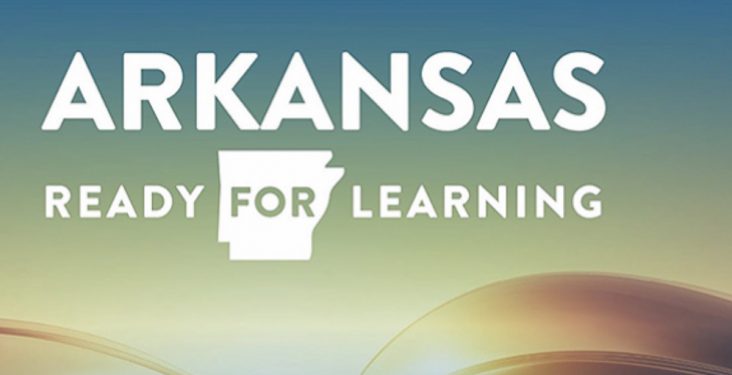‘Healthy’ guide published for opening schools; COVID-19 active cases decline, deaths rise
by August 13, 2020 3:54 pm 1,253 views

State officials have published a 20-page “Healthy School Guide” they say will help return hundreds of thousands of students, teachers and staff to more than 1,000 school facilities on Aug. 24 “in the healthiest way possible.”
The new guide includes the latest information from the U.S. Centers for Disease Control and Prevention, the Arkansas Department of Health and the American Academy of Pediatrics. It was produced in a collaborative effort between the Arkansas Department of Health, Arkansas Department of Education, Arkansas Children’s Hospital and the University of Arkansas for Medical Sciences (UAMS). (Link here for a PDF of the document.)
Gov. Asa Hutchinson said Thursday (Aug. 13) during his daily COVID-19 briefing the resource guide provides the “latest scientific advice and best practices.” UAMS Chancellor Dr. Cam Patterson said the guide was produced based on three primary objectives.
• Provide guidelines for opening schools in a safe fashion and make protocols available for school leaders, parents, students and others;
• Offer behavioral resources available for children to help cope with various unusual situations of opening schools during a pandemic; and
• Make resources available in “real time” as schools open and situations change.
He said the guide, written in lay terms, is an effort to open schools “in the healthiest way possible” and will be changed as conditions warrant. He said the document is a resource only and not intended to be used to determine the status of in-class instruction.
“This is clearly an evolving situation and we consider these documents to be living documents. They will be revised as additional information and science is made available,” Patterson said.
Part of the preface to guidance in the document notes: “The information in this guide is current as of the release date. Every school should be prepared to return to virtual learning if needed. This document is not guidance for whether schools should or should not open. When schools open for in-person learning in accordance with Arkansas Department of Health guidelines, this document is intended to provide support.”
Opening public schools as mandated by Gov. Hutchinson will return hundreds of thousands of students, teachers and staff to more than 1,000 school facilities in the state. During the 2019-2020 school year, the Arkansas Department of Education (ADE) reported 479,432 K-12 students, 33,399 teachers and 36,274 staff.
Not all educators support reopening schools to in-class instruction. Arkansas Education Association President Carol Fleming on Aug. 1) told state lawmakers she believes it is not safe for schools to open to in-class instruction. She said schools should open the 2020-2021 school year with virtual learning only. Stacey James McAdoo, the 2019 Arkansas Teacher of the Year, and Randi House, a kindergarten teacher in Conway and the 2018 Arkansas Teacher of the Year, have asked Gov. Hutchinson to not open schools to in-class instruction, saying he is putting lives at risk by doing so.
STATE COVID CASE UPDATE, POSITIVITY RATE
Known COVID-19 cases in Arkansas totaled 51,766 on Thursday, up from 51,114 on Wednesday. Of the 652 new cases, 13 were from correctional facilities. There are 6,582 active cases. The number of deaths rose from 573 to 582. The number of COVID patients hospitalized in Arkansas was 473 on Thursday, down from 486 on Wednesday. There are 112 patients on ventilators, down from 113 on Wednesday. There are 44,602 cumulative recovered cases.
Following are the top five counties with the most new community cases: Pulaski (88), Sebastian (43), Crittenden (37), Benton (34), and Jefferson (26). The counties accounted for 35.7% of the 639 new community cases reported Thursday.
As of Thursday at 1 p.m., there were 5,215,958 U.S. cases and 166,483 deaths. Globally, there were 20,692,320 cases and 751,033 deaths.
The cumulative positivity rate is 8.8% with the 583,980 tests conducted since the pandemic began. Gov. Hutchinson said the positivity rate remains too high.
“We need to get that positivity rate down. And of course, we’re down from what it was at the high points, but we want to keep moving that down because that really is the indicator of what is happening in our communities and how we are testing, and the results of that,” Gov. Hutchinson said.
